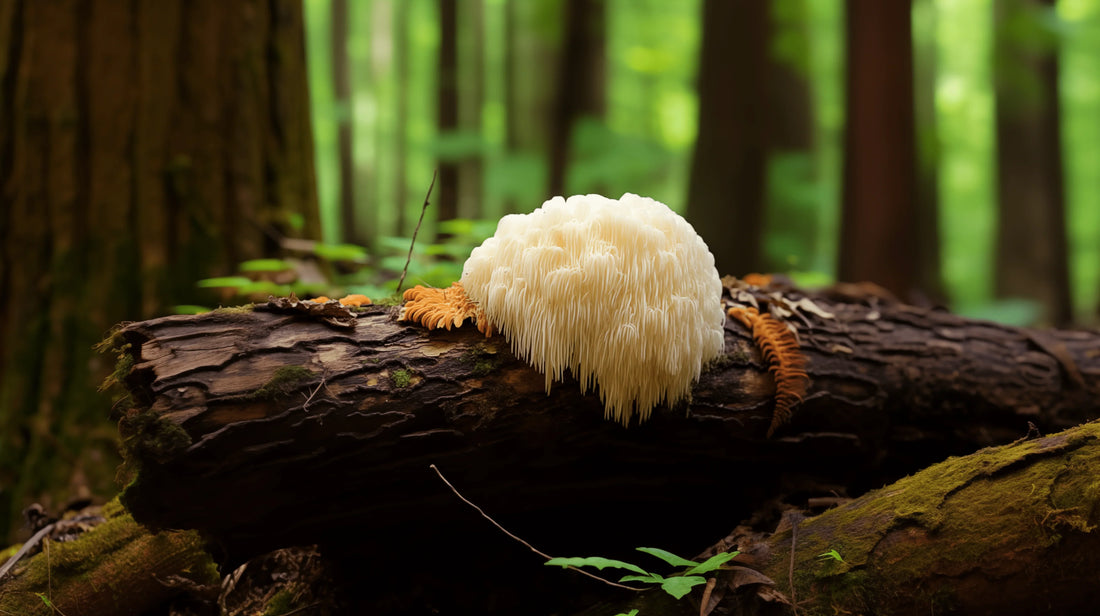
What is Lion's Mane Mushroom? Lion’s Mane (Hericium erinaceus) is an edible medicinal mushroom, easily recognizable by its unique, white, shaggy appearance resembling a lion’s mane, hence the name. Native to Asia, it has been used in traditional medicine for centuries. Recently, it's gained popularity in the wellness world for its potential cognitive and health benefits.
1. History and Traditional Uses Lion’s Mane has a long history in traditional Chinese and Japanese medicine. It was believed to promote mental clarity, support digestion, and improve overall well-being. In modern times, it has caught the attention of health enthusiasts due to its potential neuroprotective and cognitive-enhancing properties.
2. Health Benefits Lion’s Mane is primarily known for its potential cognitive benefits, including:
- Brain Health: Contains compounds that can stimulate the growth of brain cells (nerve growth factor, or NGF), which might help with neurogenesis and overall brain function.
- Memory and Focus: Early studies suggest that it can enhance memory, focus, and concentration by improving nerve signaling in the brain.
- Neuroprotection: Some research points to its potential in preventing or slowing the progression of neurodegenerative diseases, such as Alzheimer's and Parkinson's.
- Mental Clarity and Mood: Many people report feeling more mentally clear and focused when consuming Lion’s Mane regularly.
- Gut Health: Lion’s Mane may also have digestive benefits, as it has been shown to promote gut health and combat inflammation in the digestive system.
3. Nutritional Profile Lion’s Mane is a great source of:
- Antioxidants: Help reduce inflammation and oxidative stress in the body.
- Polysaccharides: These are complex carbohydrates that may support the immune system.
- Beta-glucans: Help boost immune function and may have anti-cancer properties.
- Proteins and Fiber: Contribute to its nutritional profile, making it a healthy addition to any diet.
4. How to Use Lion's Mane Lion's Mane can be consumed in several forms, each with its benefits:
-
Fresh Mushroom: If you have access to fresh Lion's Mane, you can cook it in various ways. It has a meaty texture and a mild, seafood-like taste, making it a great addition to soups, stir-fries, and other dishes.
-
Dried Lion's Mane: Dried mushrooms are available in stores and can be rehydrated for use in cooking. Dried mushrooms can also be used to make a tea or broth.
-
Supplements: Lion’s Mane is most commonly available in powdered form, capsules, or tinctures. These are great for those who don’t have access to fresh or dried mushrooms. A daily dose of 500-1000 mg is typical, but it’s always best to follow manufacturer guidelines or consult with a healthcare professional.
-
Lion’s Mane Tea: You can steep dried mushrooms or powder into hot water to create a tea. This is a popular option for those looking for a soothing, easy-to-consume method of taking Lion's Mane.
5. How to Identify and Harvest Lion’s Mane (Wild Foraging) Lion’s Mane can be found growing on hardwood trees, particularly oaks, beech, and maples. It typically grows during late summer and fall in temperate climates. When foraging for wild Lion’s Mane:
- Look for its distinctive appearance: The mushroom looks like a cluster of white, long spines hanging from the tree. It may resemble a lion’s mane or a pom-pom.
- Avoid Toxic Look-Alikes: There are no direct toxic look-alikes for Lion’s Mane, but always ensure you’re properly identifying the mushroom before harvesting. If in doubt, seek advice from an experienced forager or mycologist.
- Harvesting: To harvest, carefully cut the mushroom off the tree with a sharp knife, leaving some of the mycelium intact to ensure the mushroom continues to grow.
6. Potential Side Effects and Considerations While Lion’s Mane is generally considered safe for most people, it’s essential to be aware of the following:
- Allergic Reactions: Some people may experience allergic reactions, especially if they have sensitivities to mushrooms. Always start with a small amount to test for any adverse reactions.
- Interactions with Medications: Lion’s Mane may interact with certain medications, especially those affecting blood sugar or immune function. If you’re on medication, consult with a healthcare provider before using it.
- Pregnancy and Breastfeeding: There’s limited research on the effects of Lion’s Mane during pregnancy or breastfeeding, so it’s best to avoid it during this time unless recommended by a healthcare professional.
7. Where to Buy Lion's Mane Lion's Mane can be found at many health food stores, specialty mushroom shops, and online retailers. When purchasing supplements, always look for high-quality, organic sources to ensure purity and effectiveness.
8. Growing Lion's Mane at Home For those interested in growing their own Lion's Mane, it’s possible to cultivate this mushroom at home. You'll need:
- Spores or Mushroom Spawn: Purchase Lion’s Mane mushroom spawn online or from a gardening store.
- Growing Medium: Lion’s Mane grows best on hardwood logs or sawdust blocks.
- Environment: A cool, damp environment is ideal for growing these mushrooms.
With a little patience, you can grow your own fresh Lion’s Mane mushrooms at home!
Our products are not for use by or sale to persons under the age of 21. All products contain less than 0.3% THC per the Controlled Substances Act.
These products have not been evaluated by the FDA for safety or efficacy. This product is not intended to diagnose, treat, cure or prevent any disease.

